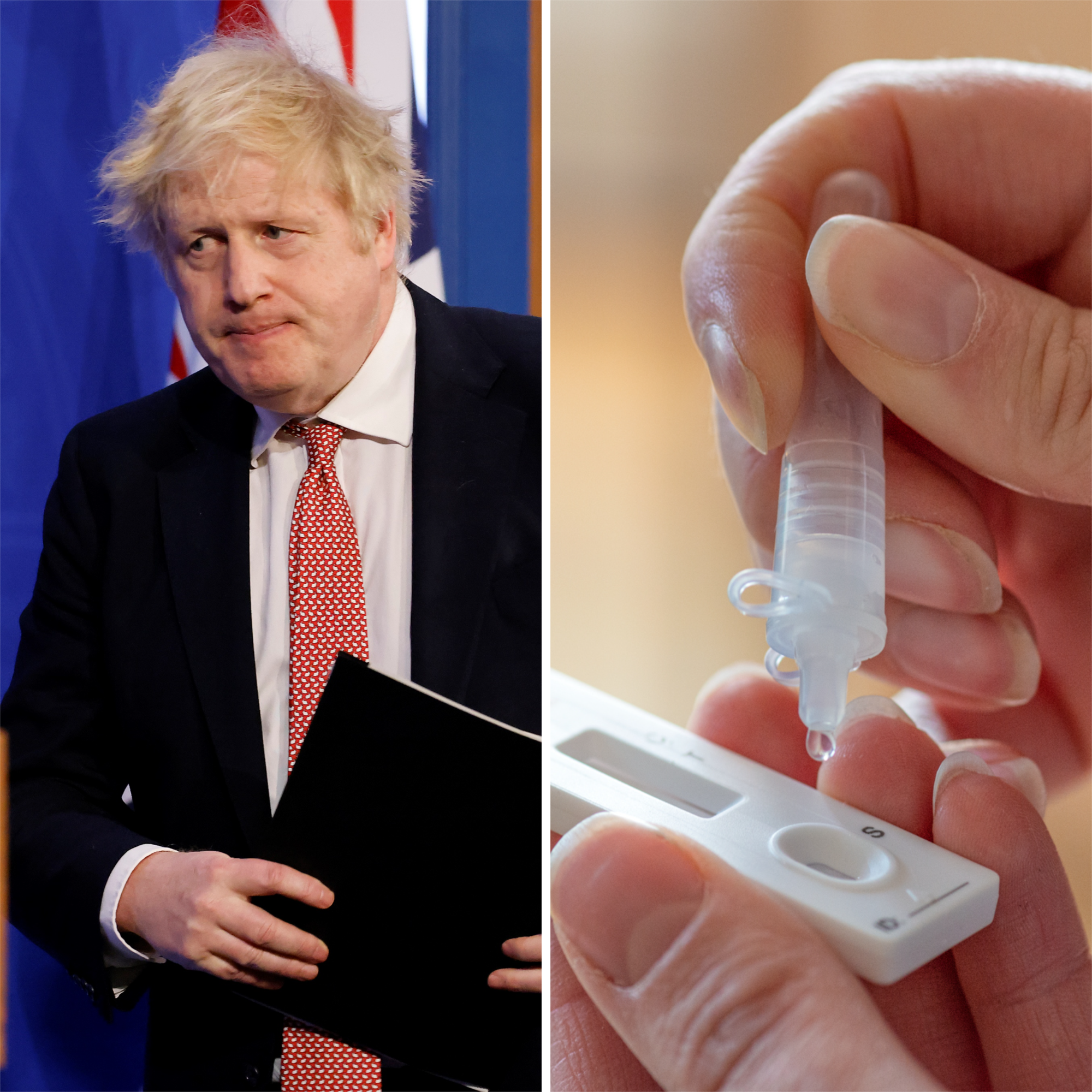How can I get tested for Covid now that free testing is ending?
The country will ‘move from government restrictions to personal responsibility’

Prime Minister Boris Johnson has announced that free Covid-19 testing for most groups will end under England’s plans to live with coronavirus.
In an announcement on Monday 21 February, Mr Johnson laid out plans to end remaining restrictions, including requirements to self-isolate and regularly test in schools.
He said the country would now deal with the virus in a “very different way, moving from government restrictions to personal responsibility”.
Under the changes, access to free lateral flow tests and PCR tests is being limited to vulnerable groups, with the general public having to pay for tests.
Mr Johnson said the decision had been taken after the government’s testing, tracing and isolation costs had exceeded budgets.
“It cost a further £15.7 billion in this financial year, and £2 billion in January alone at the height of the Omicron wave. We must now scale this back,” he said.
The move has been criticised by experts as prioritising a reduction in spending over public health. Others have also warned that the changes will lead to a rise in case numbers.
Professor Christina Pagel, a professor of operational research at University College London said the public could not be expected to exercise individual responsibility without access to free tests.
“Without it, it will be harder to know you are infected and to behave accordingly; it will be harder to know if rates are high in your neighbourhood and so whether you feel comfortable meeting others in public spaces, or going shopping without a mask for instance,” she said.
Additionally, she said lifting self-isolation requirements coupled with removing free testing will disproportionately affect deprived communities.
“People within those communities will be less able to afford testing, less able to afford to isolate and more likely to work outside the home and so potentially infect others,” she said.
“Combined with higher rates of existing health conditions and lower rates of vaccination, this is likely to lead to significantly higher burden of Covid-19 and its consequences in these communities compared to the least deprived. Where are the plans to tackle health inequalities, to improve sick pay, to improve workplaces and spaces to have cleaner air?”
Psychologists have also highlighted how policy changes have a “strong signalling effect” and inform the public’s perception of seriousness and risk of the virus.
“With testing, reducing people’s opportunities and capabilities to test easily, will lead to a reduction in the behaviour,” Dr Simon Williams, a lecturer in psychology at Swansea University said.
“Earlier in the pandemic adherence to lateral flow testing was low, but this was higher this past winter, as free testing was accompanied by a clear message over its usefulness.”
Here’s everything you need to know about the changes to Covid-19 testing.
When will free testing end?
Free Covid-19 testing, including lateral flow device tests and PCR tests will end on 1 April.
This will include testing for people who are asymptomatic and those who have symptoms.
Mr Johnson also announced an end to regular testing in schools and childcare settings as of Monday 21 February.
Will free testing end for everyone?
Free testing will not end for everyone. Mr Johnson said free tests will be limited to people who are symptomatic and are either in the oldest age groups or are most vulnerable to the virus.
He said details on “who will continue to be entitled to free tests” will be set out in full next month.
Where will tests be available?
Tests will no longer be available to order from the government website, nor will they be available to pick up from a local pharmacy.
The public will be able to purchase them from shops. Mr Johnson said the government is “working with retailers to ensure that everyone who wants to can buy a test”. He did not disclose which retailers will sell the tests.
How much will tests cost?
The government has not yet released any information on how much lateral flow tests and PCR tests will cost.
Can I still get a free Covid-19 test?
Free lateral flow tests are currently still available for order from the government website, or by calling 119 (lines are open from 7am to 11pm every day).
The website allows people to order one pack, containing seven tests, every three days.
Those with any of the three main symptoms of Covid-19 – a high temperature, a new continuous cough or a loss or change to their sense of taste and small – can still order a free PCR test or book one at their nearest test centre.
Join our commenting forum
Join thought-provoking conversations, follow other Independent readers and see their replies
Comments